RIDGID 310/316M Handleiding
RIDGID
Niet gecategoriseerd
310/316M
Bekijk gratis de handleiding van RIDGID 310/316M (10 pagina’s), behorend tot de categorie Niet gecategoriseerd. Deze gids werd als nuttig beoordeeld door 12 mensen en kreeg gemiddeld 4.7 sterren uit 6.5 reviews. Heb je een vraag over RIDGID 310/316M of wil je andere gebruikers van dit product iets vragen? Stel een vraag
Pagina 1/10

300 and 400 Lever Bender Instruction Sheet
Inspection/Maintenance
The bender should be inspected before each use for wear or dam-
age that could affect safe use. Clean as needed to aid inspection
and to prevent handles and controls from slipping from your grip
during use.
Make sure the bender is complete and properly assembled. If any
problems are found, do not use until the problems are corrected.
Lubricate all moving parts/joints as needed with a light lubricating
oil, and wipe any excess oil from the bender.
Operation
The benders can be used either hand held or mounted in a vise. See
Figures 1 & 2 for area to be securely gripped in vise.
Spring Back
All tubing will spring back slightly after a bend is made. Amount
of spring back depends on tube characteristics. You may need to
slightly overbend the tube to compensate for spring back.
General Operation
1. Rotate the form handle and latch out of the way.
2. Position tube in form groove
and secure with the latch. At
least 1/8" (3 mm) of tube should
extend past the latch.
3. Rotate shoe insert into contact
with tube. Rotate the shoe
handle around the form until
the “0” line on the shoe insert
aligns with the desired degree
of bend on the form.
For 90° and 45° Bends:
Mark the tube at the desired distance (X) from the feature (end
of tube, bend, etc.). The center of the leg of the bend will be this
distance from the feature for 90° bends. The center of the arc will
be this distance from the feature for 45° bends.
Align the tube in the form.
a. For 90° Bends:
If the feature is to the of the mark, align the mark with the LEFT
90° line on the form.
Figure 4A – Aligning for 90° Bend (LEFT)
If the feature is to the of the mark, align the mark with the RIGHT
R line on the form.
Figure 4B – Aligning for 90° Bend (RIGHT)
300 and 400 Lever Bender
Instructions
WARNING
Read these instructions and the warn-
ings and instructions for all equipment
being used before using to reduce the
risk of serious personal injury.
• Always use safety glasses to reduce the risk of eye injury.
• Do not use handle extensions (such as a piece of pipe).
Han dle extensions can slip or come off and increase the
risk of serious injury.
If you have any question concerning this RIDGID® product:
– Contact your local RIDGID distributor.
– Visit RIDGID.com or to find your local RIDGID contact point.
– Contact Ridge Tool Technical Service Department at
ProToolsTechService@Emerson.com, or in the U.S. and Canada
call 844-789-8665.
Selection of appropriate materials and installation, joining
and forming methods is the responsibility of the system designer
and/or installer. Selection of improper materials and methods could
cause system failure.
Stainless steel and other corrosion resistant materials can be con-
taminated during installation, joining and forming. This contamination
could cause corrosion and premature failure. Careful evaluation of
materials and methods for the specific service conditions, including
chemical and temperature, should be completed before any instal-
lation is attempted.
Description
The RIDGID® 300 and 400 Series Lever Benders are designed to
easily bend metal tubes to a maximum of 180°. The benders have
offset cushion grip handles and 90° start angle with specially de-
signed shoe to minimize bending efforts.
The 300 Series Plumbing benders are used to bend soft copper
tubes. The 400 Series Instrument benders can be used to bend
copper, steel and stainless steel tubes with a wall thickness up to
0.06" (1,5 mm).
See RIDGID catalog for specifications for each bender.
Figure 1 – 300 Series Plumbing Bender
Figure 2 – 400 Series Plumbing Bender
Shoe Handle
Form Model Number Location
NOTICE
Latch
Shoe Insert
Mark On
Tube
X
90° Line
on Form
X
Form Handle
Form Handle
Vise Clamp Block
Shoe Handle
Shoe
Insert
Form
Latch
Model Number Location
Vise Clamp Block
Figure 3 – Positioning Tube in
Bender
Before After
Before After
X
Mark On
Tube
R Line
X
Printed 11/22
890-011-232.09
ECN001818
REV. B
©2021, 2022 Ridge Tool Company
RIDGID and the Emerson logo are registered trademarks of Emerson Electric Co. or its subsidiaries in the US and other countries.
Any other trademarks belong to their respective holders.
EN

b. For 45° Bends: Align the mark with the 45° line on the form.
Figure 5 – Aligning for 45° Bend
Double 45° Offset Bend:
1. Mark the tube at the desired distance (X) for the first 45° bend.
2. Multiply the offset dimension (Y) by 1.414 to get the centerline
dimension between the legs of the bend. Adjust the distance as
per bend adjustment chart.
Offset Leg Length = (1.414 * Y) – Bend Adjustment
A – Unbent Tube with Markings
B – Bent Tube with Markings
Figure 6 – Double 45° Offset Bend
3. Follow procedure for first 45° Bend.
4. Reposition the tube in bender for second 45° bend and make
the second bend.
Adjustment (Gain) Calculations
When determining tube bend locations, adjustment factors must be
considered to achieve proper layout. Adjustment (Gain) is the differ-
ence in the length of tubing used in a radiused bend compared to
the length of tubing required in a sharp bend, when measured from
one end to another.
The distance around a radiused bend is always less than a sharp
bend. The adjustment factor is determined by the radius of the tube
bender and the number of degrees of the bend. See the following
chart for ad justment factors. Adjustment factors are subtracted from
the center line distances (see the example).
Before After
890-011-232.09_REV. B
2
300 and 400 Lever Bender Instruction Sheet
Bend Adjustment Chart
* This product is dual purpose, being both inch and metric.
NOTE! Bend Adjustment (Gain) factors are calculated theoretical
values. Different types of tubing materials and wall thick-
nesses may require more or less adjustment.
A – Unbent Tube with Markings
B – Bent Tube with Markings
Figure 7 – Gain Value Calculation Example
Mark On
Tube
X
45 Line
X Model Tube Bend Bend
No. (O.D.) Radius 45° 90°
310/316M* 5
/8" / 16 mm 21/4" / 56 mm 3/32" / 2.4 mm 15/16 " / 24 mm
312 3/4" 27/8" 1/8
" 11/4
"
310M 10 mm 42 mm 2 mm 18 mm
312M 12 mm 42 mm 2 mm 18 mm
314M 14 mm 56 mm 2.5 mm 24 mm
315M 15 mm 56 mm 2.5 mm 24 mm
318M 18 mm 72 mm 3 mm 31 mm
403 3/16
" 5/8" 1/32
” 1
/4”
404 1/4" 5/8" 1/32" 1
/4"
405/408M* 5
/16 " / 8 mm 15/16" / 24 mm 1/32" / 1 mm 13/32" / 10 mm
406 3/8" 15/16" 1/32" 13/32"
408 1/2" 11/2" 1/16
" 5
/8"
406M 6 mm 16 mm 0.5 mm 6.5 mm
410M 10 mm 24 mm 1 mm 10.5 mm
412M 12 mm 38 mm 1.5 mm 16.5 mm
Utilisation des cintreuses à levier
types 300 et 400
AVERTISSEMENT
Afin de limiter les risques de grave bles-
sure corporelle, et avant d’utiliser ces
outils, familiarisez-vous avec les con-
signes ci-présentes, ainsi qu’avec les
instructions et avertissements visant l’ensemble du matériel
présent.
• Portez systématiquement des lunettes de sécurité afin de
limiter les risques de blessure oculaire.
• Ne jamais utiliser de rallonges de levier tels que des
morceaux de tuyau. De telles rallonges pourraient s’échap-
per et augmenter les risques de grave blessure corporelle.
EXAMPLE: FOR MODEL 403
TUBE SIZE 3/
8"
BEND RADIUS 3/
8"
Adjustment for 90° bend = 1/
4" (x 1)
Adjustment for 45° bend = 1/
32
" (x 2)
(Values Found In Adjustment Chart)
ACTUAL TUBE = Sum of Centerline Dimensions - Adjustments for Bends
LENGTH REQUIRED = 2.00 + 3.00 + 1.50 + 1.00 - 1/4
" (.25)- 1/32
" (.03)- 1/32
" (.03)=
= 73/16
" (~7.2")
Reference Mark 45° Bend Mark
X1.414 Y
Bend Adj.
X
1.414 Y
Reference Mark
Y
2.00
3.00
Reference Mark 45° Bend Mark
3.00
1.50
Reference Mark
90° Bend Mark
7.20
.25 .03 .03
1.00
1.50
2.00
1.00
45°
FR

300 and 400 Lever Bender Instruction Sheet
890-011-232.09_REV. B 3
En cas de questions visant ce produit RIDGID® :
– Consultez le concessionnaire RIDGID le plus proche.
– Allez à RIDGID.com pour localiser le représentant RIDGID le plus
proche.
– Consultez les services techniques de Ridge Tool par courriel
adressé à ProToolsTechService@Emerson.com ou bien, à partir
des Etats-Unis ou du Canada, en composant le 844-789-8665.
Le choix des matériaux et des méthodes de
façonnage et installation appropriés appartient au bureau d’études
et/ou à l’installateur du réseau. Le choix inapproprié de matériaux
ou de méthodes d’exécution pourraient entrainer la défaillance du
réseau.
L’acier inoxydable et autres matériaux anti-corrosion risquent d’être
contaminés en cours d’installation, de raccordement ou de façon-
nage. Une telle contamination pourrait entrainer la corrosion et la dé-
faillance prématurée du réseau. Il convient donc d’effectuer une éval-
uation approfondie des matériaux et méthodes utilisés en fonction
des conditions d’exploitation anticipées, notamment au niveau des
milieux chimiques et thermiques, avant toute tentative d’installation.
Description
Les cintreuses RIDGID® des séries 300 et 400 facilitent le cintrage
des tubes métalliques à un maximum de 180°. Elles disposent de
manches déportés avec poignée assurant un angle de départ de
90° et un sabot spécifiquement prévu pour limiter l’effort nécessaire
au cintrage.
Les cintreuses de plomberie de la série 300 sont prévues pour le
ceintrage des tubes en cuivre malléables. Les cintreuses industri-
elles de la série 400 peuvent servir au cintrage des tubes en cuivre,
acier et acier inoxydable d’une épaisseur de parois maximale de
0,06" (1,5 mm).
Reportez-vous au catalogue RIDGID pour les caractéristiques de
chaque ceintreuse.
Figure 1 – Ceintreuse de plomberie série 300
Figure 2 – Ceintreuse de plomberie série 400
Inspection et entretien
La cintreuse doit être examinée avant chaque utilisation pour
signes d’usure ou de détérioration qui pourraient nuire à sa sécurité
opérationnelle. Nettoyez-la au besoin afin d’en faciliter l’inspection
et d’éviter que ses poignées s’échappent de vos mains en cours
d’utilisation.
Vérifiez l’intégralité et l’assemblage approprié de la cintreuse. Toute
anomalie éventuelle devra être corrigée avant d’utiliser l’outil. Au
besoin, lubrifiez l’ensemble de ses articulations à l’aide d’une huile
minérale légère, puis essuyez tout résidu d’huile éventuel.
Fonctionnement
Ces cintreuses peuvent être tenues entre les mains ou montées sur
étau. Se reporter aux Figures 1 et 2 pour les blocs d’arrimage sur
étau.
Redressage du tube
Tout tube aura tendance à se redresser légèrement en fin de cein-
trage. Ce redressage dépendra des caractéristiques du tube. Il sera
peut-être nécessaire de cintrer le tube un peu plus que prévu pour
le compenser.
Fonctionnement général
1. Ouvrez le manche du gabarit et son verrou.
2. Positionnez le tube dans le
gabarit et engagez son verrou,
avec un minimum de 1/8" (3
mm) de tube en saillie au-delà
du verrou.
3. Rabattez l’insert de sabot con-
tre le tube. Tournez le manche
du sabot autour du gabarit
jusqu’à ce que le repère « 0
» de l’insert de sabot s’aligne
sur le degré de courbure voulu
du gabarit.
Cintrages à 90° et 45° :
Marquez le tube à la distance voulue (X) ente lui et le point de
raccordement (extrémité de tuyau, raccord, etc.). Dans le cas de
ceintrages à 90°, l’axe de la partie rectiligne du tube sera égale à
cette distance. Pour les ceintrages à 45° cette distance partira de
l’axe de l’arc de cintrage du tube.
Alignez le tube dans le gabarit.
a. Pour coudes à 90° :
Si le point de raccordement se trouve à gauche du repère,
alignez-le sur le repère du gabarit.90°
Figure 4A – Alignement pour ceintrage à 90° à gauche
Si le point de raccordement est à du repère, alignez-le droite
sur repère du gabarit.R
Figure 4B – Alignement pour cintrage à 90° à droite
Manche du sabot
Gabarit Référence du modèle
AVIS IMPORTANT
Verrou
Insert de sabot
Repère
sur tube
X
Repère 90°
du gabarit
X
Manche du gabarit
Manche du gabarit
Bloc d’arrimage sur étau
Manche du sabot
Insert de
sabot
Gabarit
Verrou
Référence du modèle
Bloc d’arrimage sur étau
Figure 3 – Positionnement du
tube dans
a cintreuse
Avant Après
Avant Après
X
Repère
sur tube
Repère « R »
X
Product specificaties
| Merk: | RIDGID |
| Categorie: | Niet gecategoriseerd |
| Model: | 310/316M |
Heb je hulp nodig?
Als je hulp nodig hebt met RIDGID 310/316M stel dan hieronder een vraag en andere gebruikers zullen je antwoorden
Handleiding Niet gecategoriseerd RIDGID
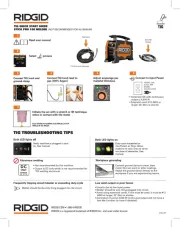
17 Juni 2025

16 Juni 2025

18 Augustus 2024

5 Maart 2024

5 Maart 2024

5 Maart 2024

27 Februari 2024

26 Februari 2024

26 Februari 2024

26 Februari 2024
Handleiding Niet gecategoriseerd
- Telycam
- Progressive Industries
- AdHoc
- Mircom
- Nxg
- I.safe Mobile
- AVer
- Accsoon
- Elvid
- Evga
- Equator
- NEP
- Intermatic
- Caretero
- Kayoba
Nieuwste handleidingen voor Niet gecategoriseerd
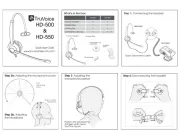
1 Augustus 2025
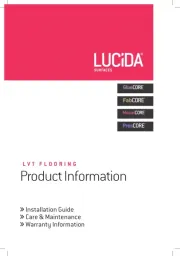
1 Augustus 2025
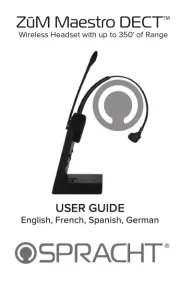
1 Augustus 2025
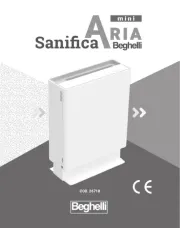
1 Augustus 2025
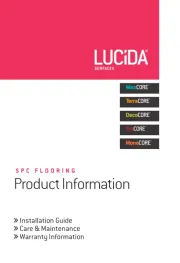
1 Augustus 2025
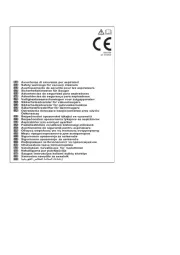
1 Augustus 2025
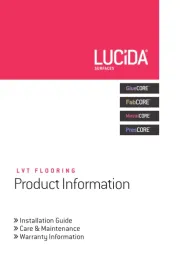
1 Augustus 2025
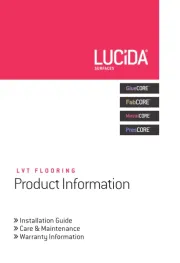
1 Augustus 2025
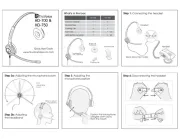
31 Juli 2025
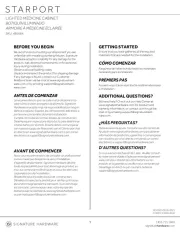
31 Juli 2025